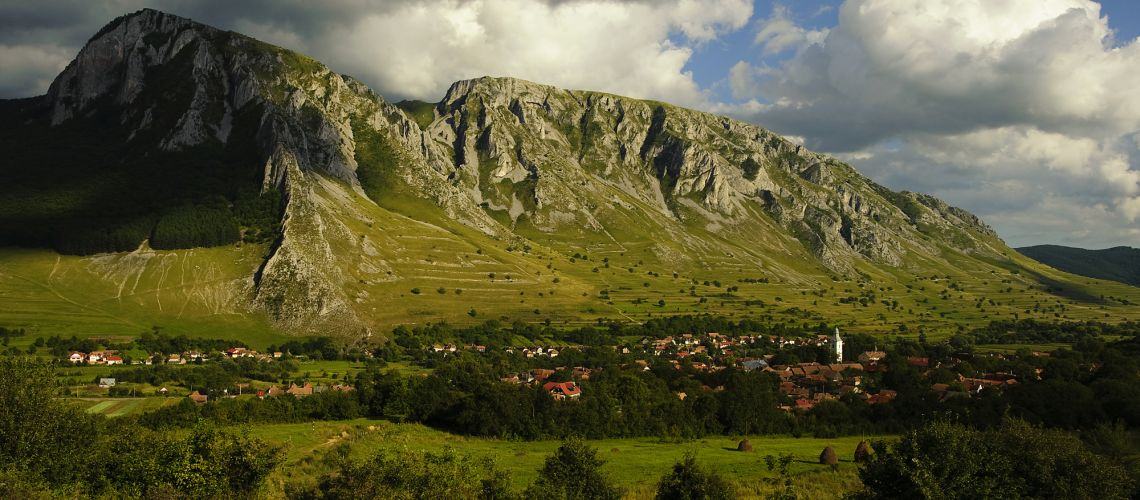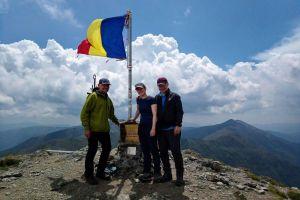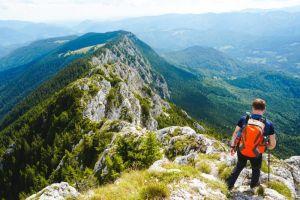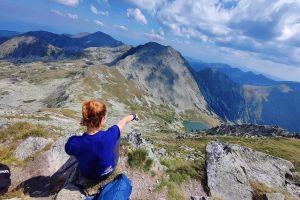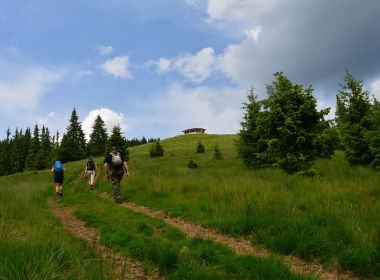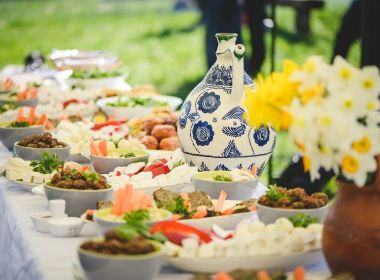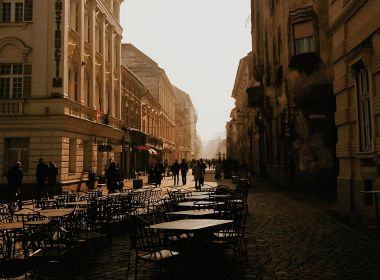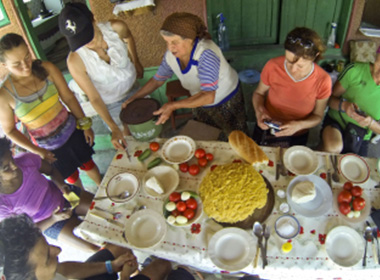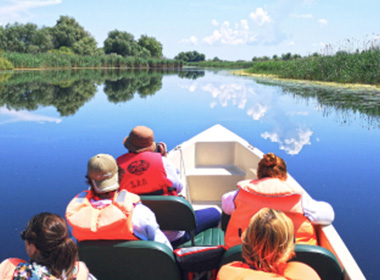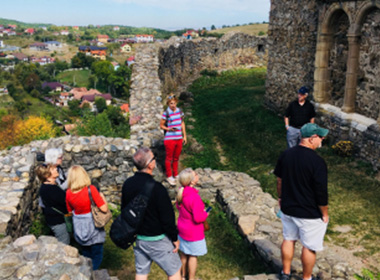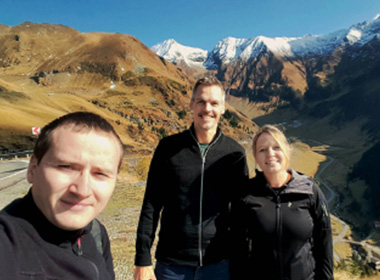Romania is an amazing destination for walking trips, hiking, multi-day treks, mountaineering and all sorts of outdoor adventures and sports – yet few travellers know this!
If you go hiking in Romania you'll be rewarded with amazing views of untouched sceneries and dense forests where wild animals roam freely and mountain villages lead a simple life far from the hustle and bustle of civilisation.
- Local tip: did you know Romania is known as Europe’s last wilderness reserve? Watch the documentaries Wild Carpathia and Untamed Romania to find out why!
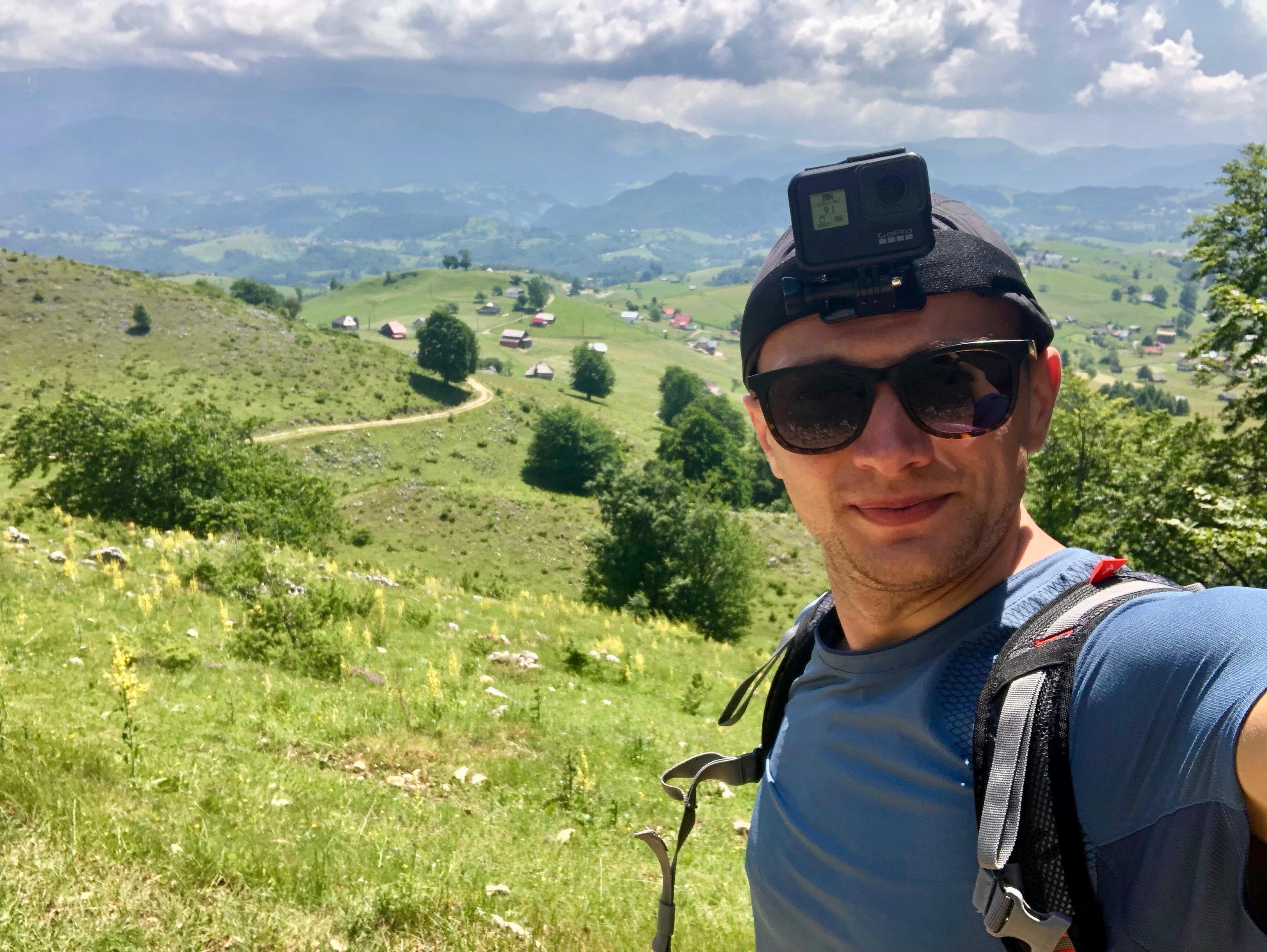
The happy ex-corporate lawyer behind Romanian Friend on a research trip :)
So if you want to go on a hiking in Romania on a day trip or multi-day trekking trip, on a camping expedition, to see wildlife or visit popular natural attractions – in this complete hiking in Romanian Mountains guide (made by locals!) you’ll find:
- practical info and safety tips
- how to plan your trip and what to expect
- suggestions on where to go for the best hikes
- the best way to enjoy Romania's beautiful outdoors
- guided tours for the best hiking trails
As you'll see, hiking in the Romanian Carpathians is not easy because of our underdeveloped tourist infrastructure, wilderness and risk of running into brown bears! And that’s besides the usual risks of going in the mountains…
Which makes it even more exciting - with proper planning! Also check our guide on how to visit Romania for the first time. And if you have questions, or need help planning your hiking trip or a group experience just contact us - we're happy to help!
Table of contents
- The Romanian Carpathians: the basics & must know
- What Romania's Mountains have to offer
- When to go hiking in Romania
- Planning your hiking trip: What to expect
- Trail signs, maps and info
- Infrastructure and accommodation in the mountains
- Camping options
- Difficulty & technical hikes
- Hiking gear
- Wildlife in Romania: What to watch out for and tour options
- Should you hire a licensed hiking guide in Romania?
- The most popular hiking trails in Romania
- 1. Fagaras Mountains
- Popular mountain trails in Fagaras Mountains
- 2. Bucegi Mountains
- Popular mountain trails in the Bucegi Mountains
- 3. Piatra Craiului Mountains
- Popular mountain trails in Piatra Craiului National Park
- 4. Apuseni Mountains and National Park
- Popular mountain trails in the Apuseni Mountains
- 5. Retezat Natural Park
- Popular mountain trails in the Retezat Mountains
What our hiking trips in Piatra Craiului look like
The Romanian Carpathians: the basics & must know
The Carpathian Mountains are Europe’s second-longest mountain range stretching 1,500 km through 6 countries in Eastern Europe: Serbia, Romania, Ukraine, Slovakia, Czech Republic and Poland.
Most of the Carpathians are in Romania where they occupy a whopping 55% of our country’s land area. Forming an L-shaped arc, the Romanian Mountains are divided into 3 major groups each with its own subdivisions, specifics, natural attractions and tourist potential:
- Western Carpathians (on the map between Oradea, Cluj-Napoca and Deva; mountains of 1,200-1,800m; locally known as Apuseni Mountains: picturesque, lots of villages, caves and natural attractions)
- Southern Carpathians (from Timisoara to Brasov; the highest and wildest mountains in Romania with average altitudes of 1,800 – 2,500m; home to the popular Retezat, Parang, Fagaras, Piatra Craiului and Bucegi Mountains)
- Eastern Carpathians (from Brasov to Suceava; wild and the most underdeveloped; average altitudes of 1,500 - 2,300m; popular ranges include Calimani, Ceahlau and Rodnei Mountains)
A detailed map of Romania’s Carpathians and their many subdivisions is here. Hills are yellow (up to 800m), foothills (800 - 1,500m) are light brown and mountains are dark brown. So can you imagine how many hiking routes there are in Romania?
The three groups are also the natural border for the three historical regions that form our country:
- Transylvania (inside the arc)
- Wallachia (South of the Carpathians until the Danube)
- and Moldova (from the Eastern Carpathians until the Prut River).
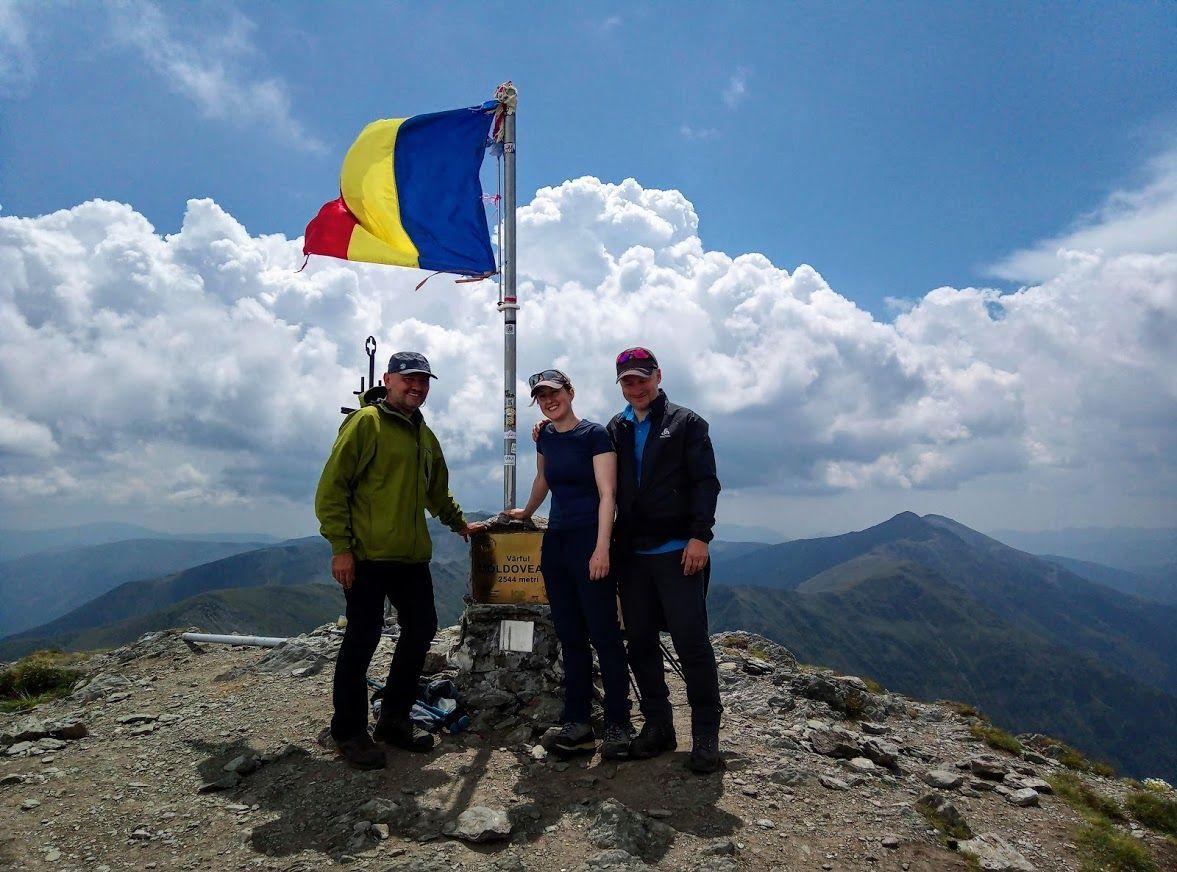
One of our guides and two happy hikers on the highest peak in Romania
What Romania's Mountains have to offer
Romania is blessed with stunning natural beauty, from towering mountain peaks and cliffs to caves, gorges, waterfalls, and glacial lakes.
Outdoor enthusiasts can enjoy wild landscapes, small villages, and sheepfolds, with plenty of challenging hikes. Moldoveanu Peak (2,544m) and Negoiu Peak (2,535m) in the Făgăraș Mountains are Romania's tallest. And with many mountain peaks over 2,500m, the views are stunning.
But Romania’s trails welcome everyone, from beginners to experienced hikers seeking adventure.
Beyond hiking, try via ferrata, rock climbing, caving, rafting, or MTB trails.
- Pro tip: As these adventures unfold in nature, it’s wise to consider potential risks and team up with a local guide to make the most of your time exploring Romania’s wilderness.
Check all our hiking tours for the best hiking trails and natural attractions all over the country with different starting locations:
When to go hiking in Romania
The best time for hiking in Romania is late April–October for most trails (1,500–1,800m) and mid-June–October for high peaks (over 2,000m).
Romania’s temperate continental climate is usually warm and fair, but mountain weather, especially at high altitudes, can change quickly (so always stick to marked paths and check the weather forecast before heading out).
- Check our article on when to visit Romania for more info on what kind of weather to expect and suggestions for each season.
Summer is ideal for hiking anywhere in Romania, just don’t forget the sun cream!
In May, popular ranges like Fagaras, Bucegi, and Retezat Mountains are snowy and need winter gear, while Apuseni and Piatra Craiului in Transylvania are hike-ready by April. *February, March,* and November tend to be rainier months.
Pro tip:What I do is look at the temperatures and forecast in the nearest small village of where I'm going hiking. Then I deduct 5 degrees to be on the safe side with my clothing, especially for early mornings or late evenings.
If you book one of our hiking trips our guides will inform you of local weather conditions before you come and tell you exactly what to bring and what to expect.
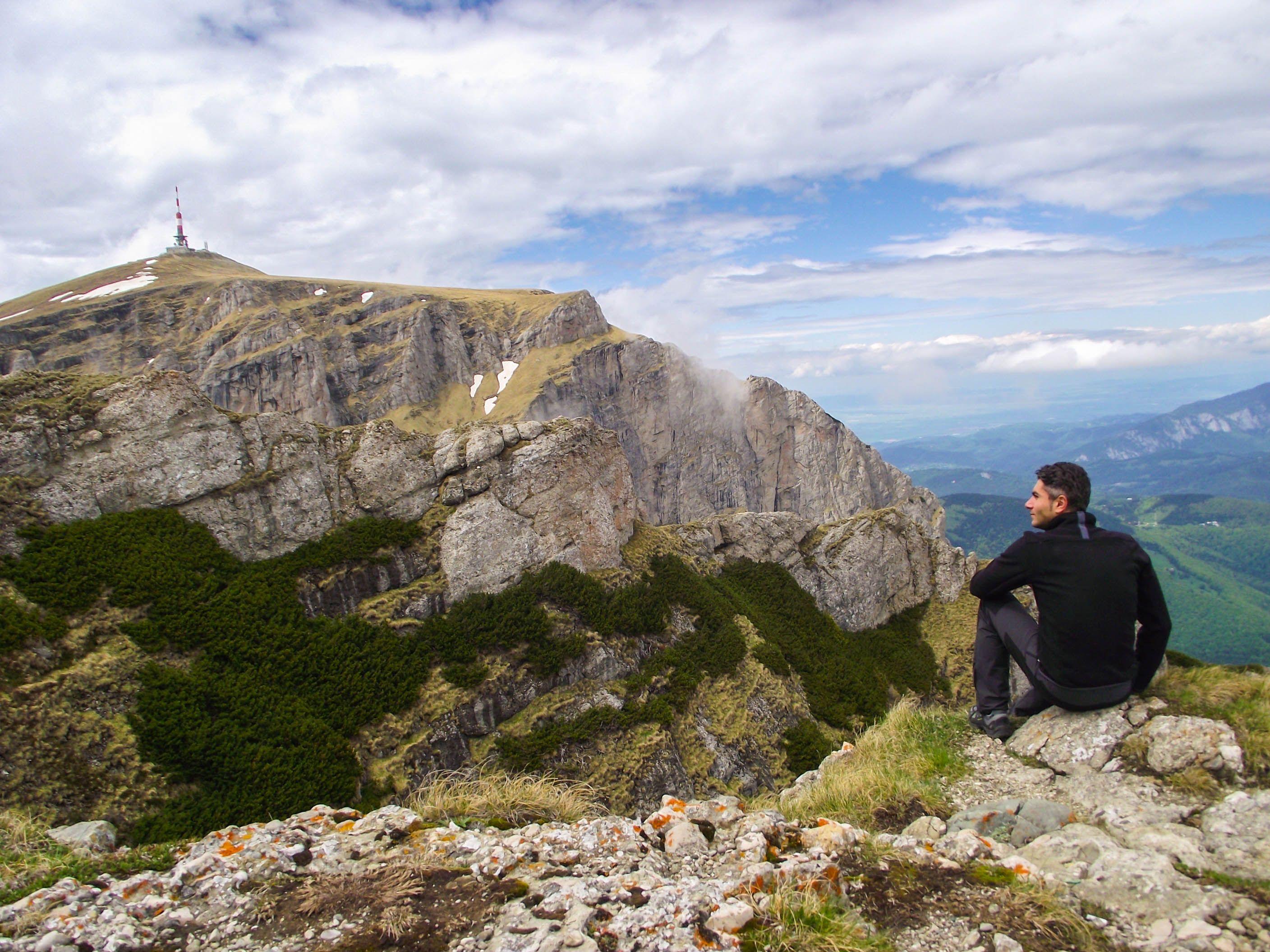
Hiking in the Bucegi Mountains near Bucharest
Planning your hiking trip: What to expect
Please don’t skip this section. I think it’s the most important one from this hiking guide and you won’t find this info anywhere else.
Exploring Romania's mountains is challenging even for locals for several reasons. And it’s even more so for non-locals. Sadly, our government is not doing a good job of promoting our country or developing tourist infrastructure and that’s why I’m going to give you an honest, realistic picture of what to expect.
So, here we go:
- Limited tourism infrastructure: Romania is often overlooked as a hiking destination. There are no group hiking tours (except for high peaks) and few other hikers, especially outside the summer months.
- Lack of online resources: There’s no reliable, up-to-date English database for trails, maps, or hiking info, and I’m cautious about recommending sites you find online, even for the most popular hiking trails.
- Limited public transport: To reach remote areas like Fagaras or Retezat, you’ll need a car, as public transportation is underdeveloped. Trailheads are often far from villages with no taxis or shuttles.
- Language barrier: Few locals in rural areas speak English, and even fewer can provide accurate hiking info. In some places, it’s completely wild, just animals!
- Wildlife risks: Brown bears and wild boars may appear on mountain trails or near campsites, drawn by food smells. Shepherd dogs can also be overprotective and dangerous. Carrying pepper spray is as important as water.
But if you don’t want to worry about any of this and miss out on Romania’s beautiful outdoors – hiring a licensed mountain guide is a great option, if not the best. And if you think you don’t need one, keep reading :)
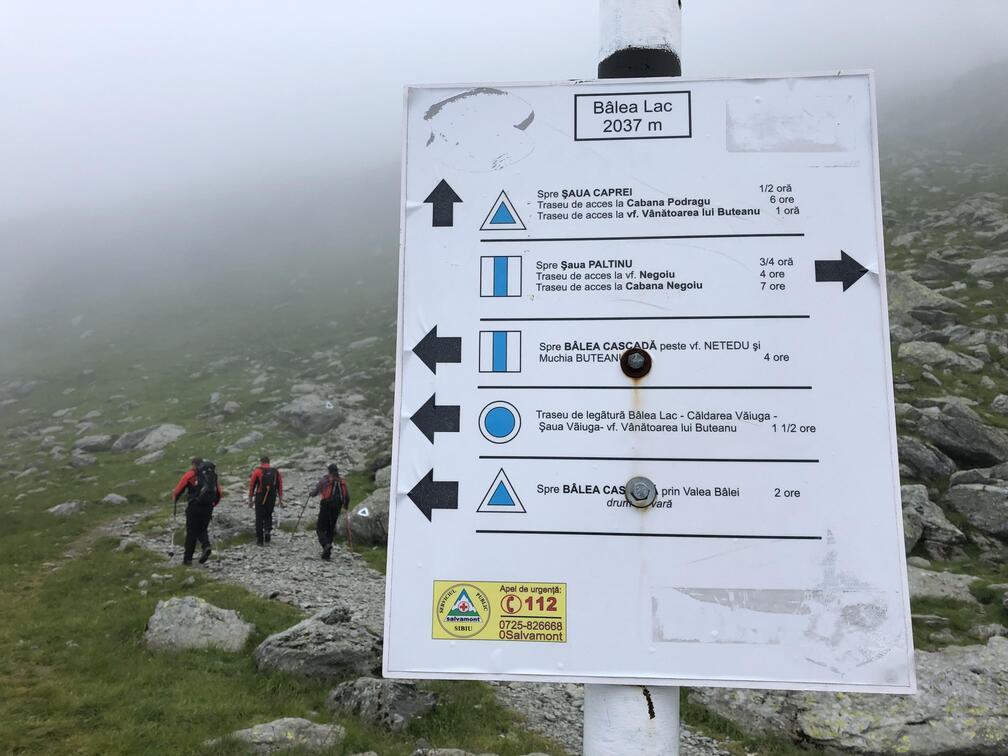
Typical hiking signs in Romania's mountains
Trail signs, maps and info
Now that we’ve covered the general points, let’s get into specifics.
Trail signs, maps and info are all in Romanian. And, like I said, there’s no English database with up-to-date info on hiking trails. So if you’re planning to do a self-guided hiking trip in Romania's mountains you’ll need to do some research on your own.
Pro tip:If you really want to go hiking on your own, go to a local library and get a guide of Romania’s mountains with detailed maps. That’s what I – and my guides – use. They’re in Romanian but the maps and details are reliable.
To visit national parks, you'll need to buy an entry ticket. The price is usually low, but keep in mind that not everyone at the info points speaks English. It's important to get a ticket, as park rangers or rescue crews could fine you if you don’t.
Infrastructure and accommodation in the mountains
At low altitudes (up to 1,000m) there are small villages with tourist guesthouses called pensiune. Rooms start at 20 Euro/night (check Booking.com or Airbnb). Expect basic facilities, a fixed menu, limited English, and check if they accept cards.
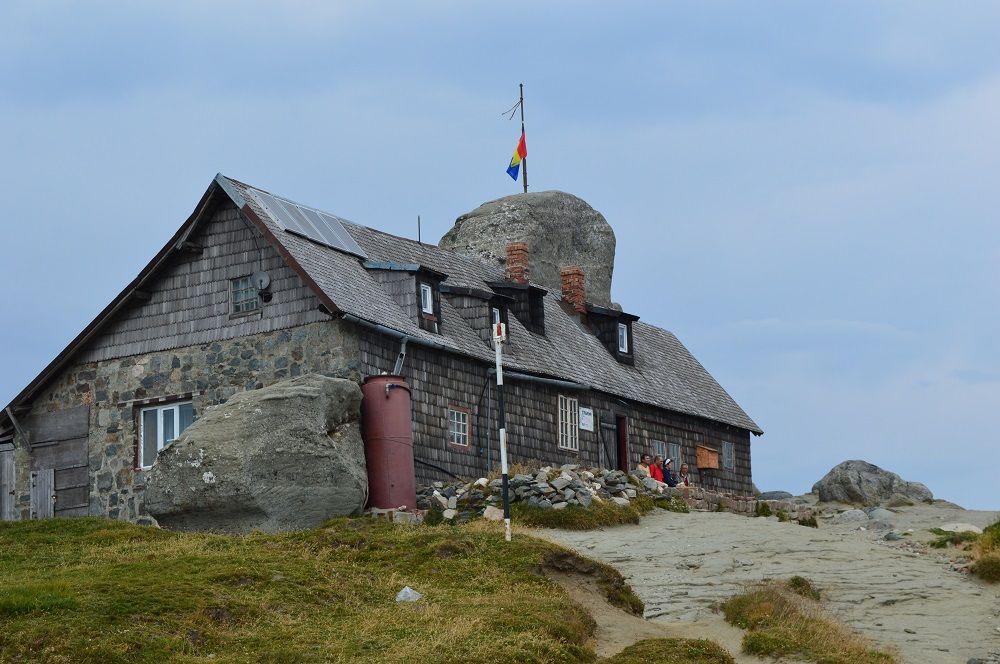
A typical 'cabana' in the high mountains of Romania
At high altitudes (1,200m+), you'll find basic mountain huts or chalets with shared dorms (12-16 bunk beds), no showers, and cash-only payment. Most require a sleeping bag.
Some mountain huts, like Cabana Curmatura (1,400m) for Piatra Craiului, Cabana Podragu (2,136m) for Moldoveanu, Cabana Negoiu (1,546m) for Negoiu, and Cabana Padina (Bucegi), are the only options for summiting Romania's highest peaks. They're often open seasonally, require phone bookings, and demand full, nonrefundable advance payment.
Warning: Due to high demand for Romania's highest peaks, accommodation is limited and hard to secure without booking 2-3 weeks in advance, especially during weekends or summer. Booking one of our hiking tours means our guide will handle all the logistics.
While very popular and easy to do in Europe, hut to hut hiking trips in Romania are much harder to organise for the reasons above. The trails for such trips are challenging (4/5 grade) and only for experienced hikers. But it can be done - if you're up for it, and plan in advance! Our itineraries cross Bucegi and Fagaras Mountains and we've organised some amazing adventures.
Unmanned mountain refuges are few, small (6-12 people), basic, and scattered. Finding available spots is luck-based, and I couldn't find an up-to-date map, only local descriptions. After winter, many need checking or maintenance, so we generally avoid them on our tours.
Camping options
As for camping in the Romanian mountains - there are no special designated areas for this because everything is so wild - so in theory you could set up camp anywhere! But doing this alone in a foreign country... and having to carry lots of equipment and supplies... with wild animals roaming around... well, your choice! :)
One of our guides is really passionate about camping expeditions especially in Fagaras Mts (to avoid the tourist trails) or Retezat National Park (where camping is the only accommodation option!) so if you’re interested in this kind of adventure then contact us. He’ll give you a tent and everything else you need.
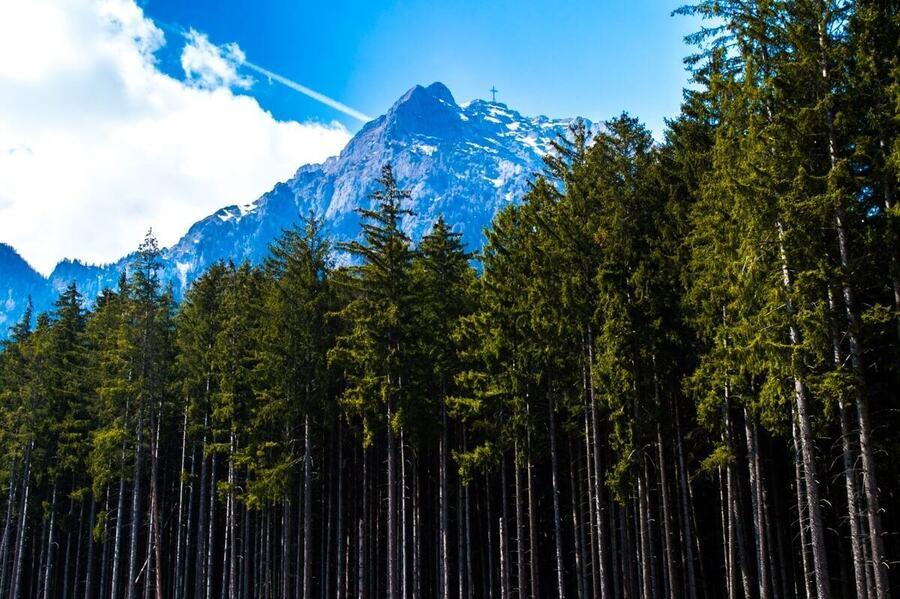
Difficulty & technical hikes
The Carpathian Mountains have an incredibly variety of hiking trails and multi-day trekking trips. No matter your fitness level, if you’re a passionate mountaineer, an average person looking for an easy hike in nature or an adrenaline junkie – there’s something here for you.
Each major mountain group usually has several trails of varying difficulty levels from different starting points.
- the difficult mountains are in the Central Carpathians: Fagaras, Retezat, Bucegi, Parang and Iezer (the highest mountains and most inaccessible); expect long hikes 6-9h, averaging 12-25 km, on rocky paths, 600 - 1,500 altitude differences and completely wild sceneries - so you’ll be very alone and lots of preparation is key.
- medium difficulty ranges: Piatra Craiului, Piatra Mare, Leaota (all close to Brasov), Rodnei (North), Apuseni (West) and Cernei (South-West); but even here you can find hard difficulty trails, especially if you're aiming for the peaks.
- for an easy walk with beautiful scenery, there are lots of day trips you can do starting from Brasov, Sibiu, Cluj-Napoca and Timisoara; they usually start from nearby mountain villages – but unfortunately there’s little info about them for non-locals (eg. no info point or brochures) and there's no way to get there without a car.
Hiking gear
To have a great experience in our mountains you only need the typical hiking gear: good boots (and gaiters for snow), windproof & waterproof jacket, thermal clothing, some energy bars, sun cream, backpack, etc. You can rent hiking sticks from our guides.
Most hiking trails don't require any technical hiking gear except if you’re planning to do rock climbing, a via ferrata route, caving or canyoning.
But in the areas where you can do these activities, there are no shops to rent equipment. But our specialist guides have all the equipment you need so all you need is to book a tour with them or send us a message.
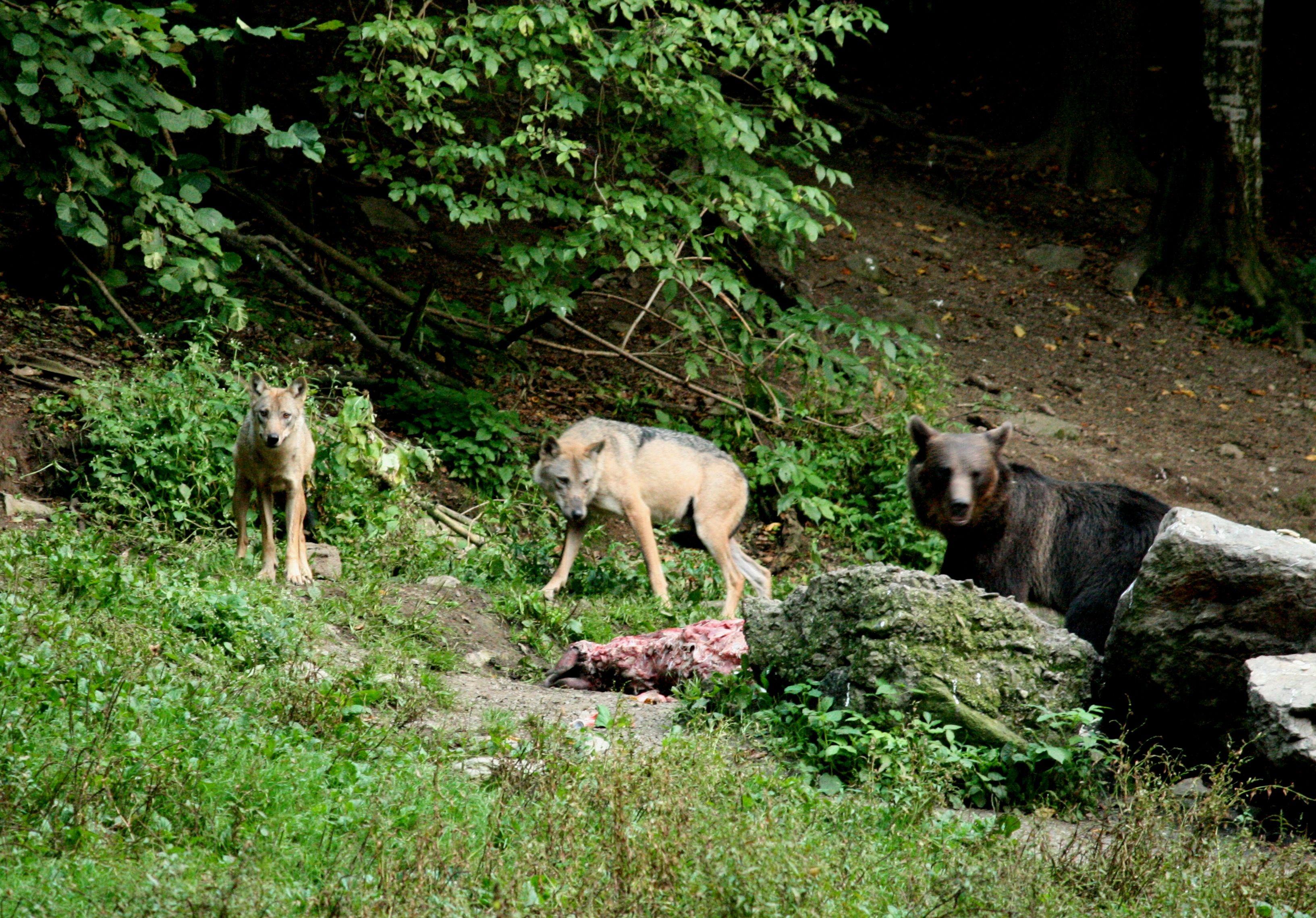
Wildlife in Romania: What to watch out for and tour options
The Carpathian Mountains are home to a large and varied wildlife population: brown bears, wolves, wild deers, chamois, re-wilded bisons, boars, elusive lynx, the rare capercaillie, black goats and many small mountain-dwelling creatures and birds.
Wildlife tours are done only by specialist wildlife guides which are few and in high demand - so you need to book them well in advance. Hiking guides don't do these trips so these activities can't be combined on a multi-day trip unless we arrange logistics with 2 different guides.
Pro tip:we partnered with a non-profit organisation who do 3-day combined hiking & wildlife trips in the wildest part of Fagaras Mts; you'll stay at their private eco-friendly cabins and support local conservation efforts
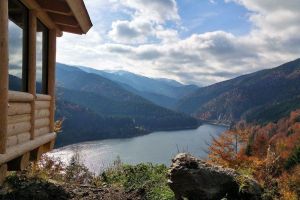
3-Day Hiking & Wildlife Trip at an Eco-Luxury Private Cabin in Fagaras Mts
Start from: Rucar, Arges county
Our country is home to the largest brown bear population in Europe estimated between 4,500 – 7,000. By comparison, the next country is Slovakia with 1,000 – 1,500 :) Most bears are in Sibiu, Brasov, Prahova (ironically the main touristic and hiking areas!), Harghita and Covasna counties. So basically in the Central and Eastern Carpathians.
Check all our wildlife watching and tracking tours:
Should you hire a licensed hiking guide in Romania?
As you can see, going hiking alone in Romania won't be easy - especially if you've never been to Romania before or looking to do a multi-day trek.
In recent years, unrealistic expectations, relying on inaccurate or outdated info and underestimating Romania's wilderness have caused more and more incidents of people who got in trouble hiking in Transylvania. They either got lost or were unprepared for changing weather conditions, ran into a mama bear or had accidents and needed rescue.
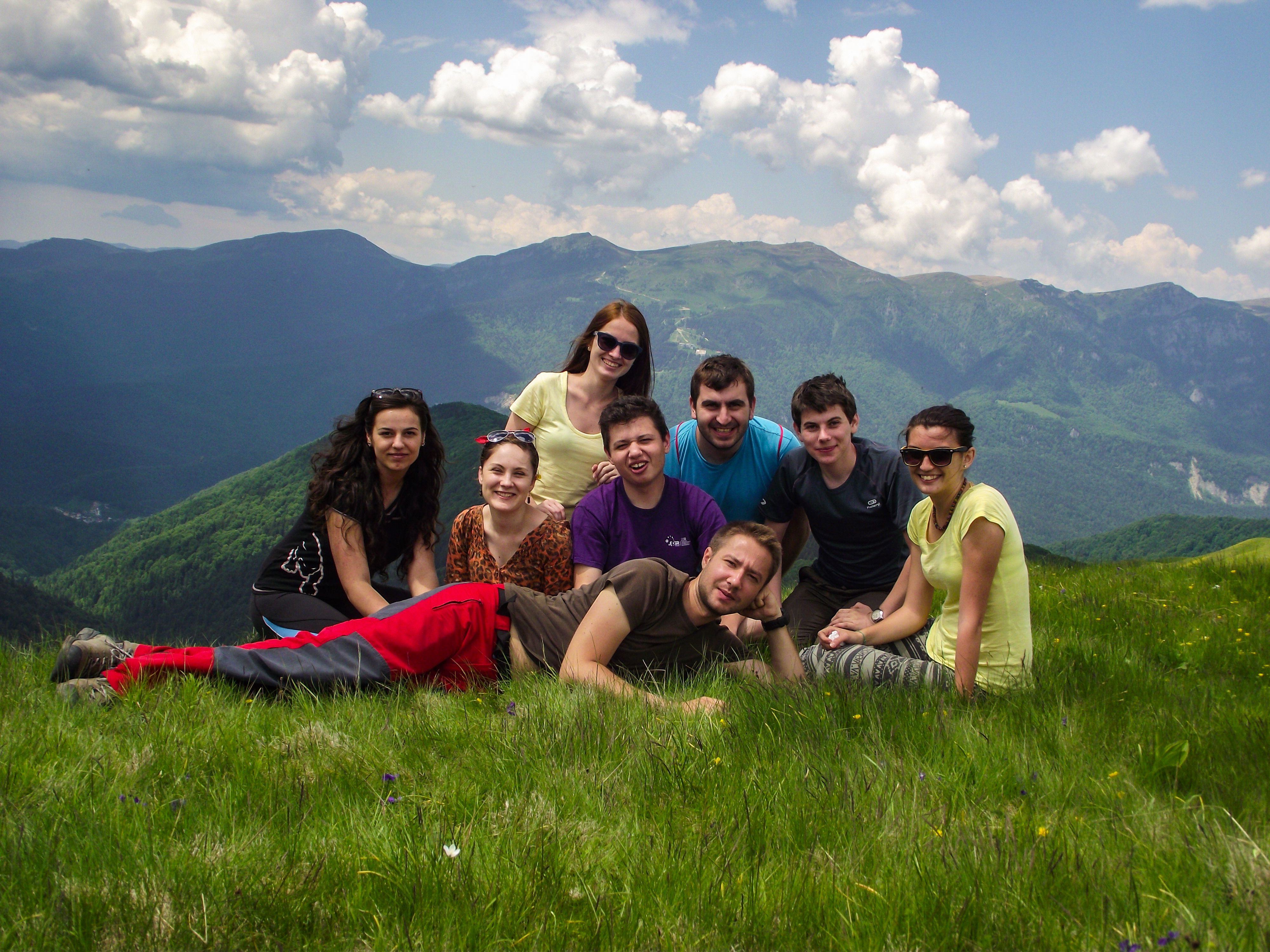
Paint me like I'm one of your guides :)
Important:We care more about safety than making a few bucks - we don't give info on specific hiking trails or self-guided itineraries. We can't determine your fitness level, hiking experience or equipment through email and would rather not risk putting you in danger.
Our hiking guides are licensed experts passionate about our mountains. Besides being your friendly travel companions, they're armed with encouragement, jokes and pepper spray – so they will keep you safe!
And since all our hiking tours are private they can be adjusted to your physical conditions, interests and weather conditions. Our guides will describe in detail what trails are available in the area so you can choose which one you want.
-
NOTall tourist guides are licensed for hiking so we strongly recommend you check their credentials before going on a trip with them (must be issued by AGMR, SGLM/UIMLA, the local hiking certification bodies)
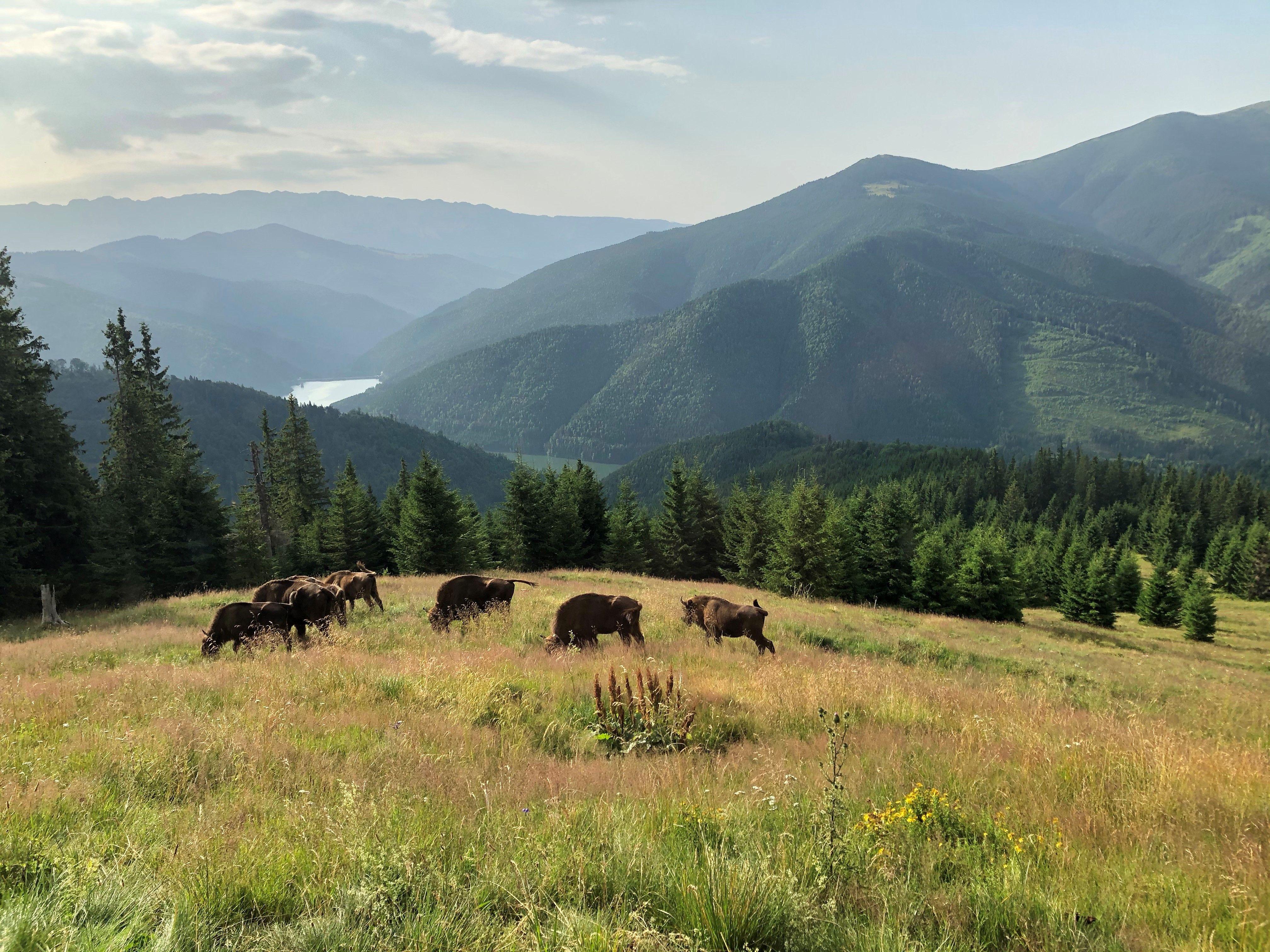
A rare sight: the re-wilded bisons in Fagaras Mts
The most popular hiking trails in Romania
Besides the wild and rugged character of the Romanian Carpathians, hikers will have another surprise: the beautiful scenery you'll see is either untouched by man or, if it is, it lives in an unbelievable time bubble.
But it's not easy to pick the best hikes - so here is a short description of the best places to go hiking in Romania.
- Pro tip: One short trip to Romania can't include all the hiking trails and attractions available all over the country. It's better to focus on one place you can truly explore. For example, those wanting to hike in Transylvania should base themselves in the medieval towns of Brasov or Sibiu, or in Cluj-Napoca, the largest city in the region.
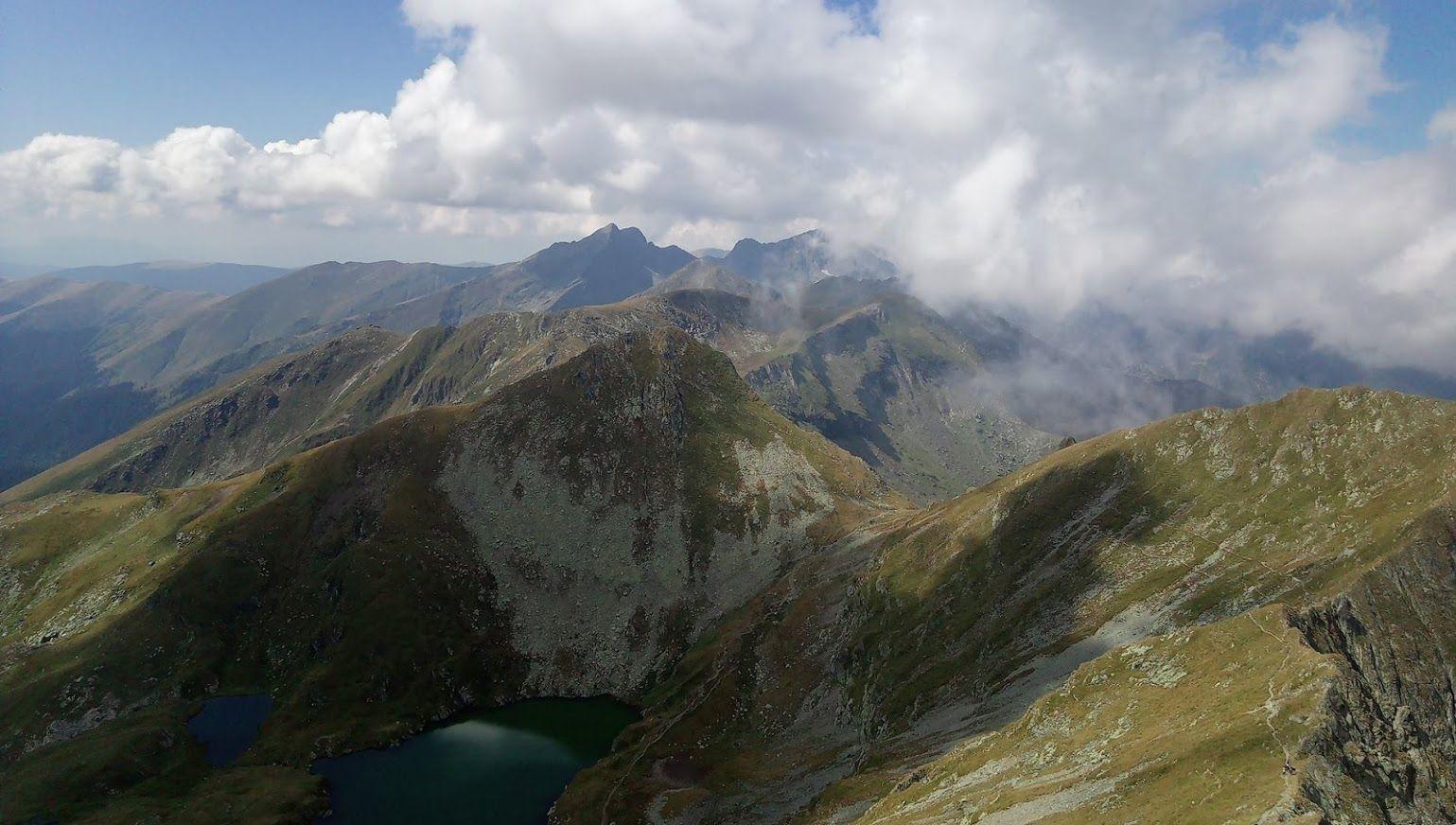
1. Fagaras Mountains
Also known as Transylvania’s Alps, Fagaras Mountains are located in the heart of Romania and undoubtedly offer the most dramatic and wild landscapes. With their rocky crests and narrow hiking trails going at altitudes of 2,300 - 2,500m, they're also the most challenging.
These are the highest mountains in Romania, towering guardians between Transylvania and Wallachia's vast plains: 9 peaks over 2,500m and 30 over 2,400m!
- Pro tip: the main road to access Fagaras Mts is Transfagarasan Road which is open for driving only from 1 July - 30 October. Outside this period they can be approached only from Brasov or Sibiu by taking the cable car to Bâlea Lake which goes over the main road.
Fagaras mountains are also known for their wilderness where a variety of wild animals rule the land.
Popular mountain trails in Fagaras Mountains
The route to Moldoveanu - the highest peak in Romania at 2.544m - is obviously the first one. It's a challenging hiking trail that needs 3 full days with 2 nights at Podragu Cabin. Some sections are very dangerous (with cables to hold on to). Total of 22h of hiking in 3 days with altitude differences of up to 1,000m in some sections. But the reward is worth it - and our Fagaras hiking tour from Brasov is perfect for it!
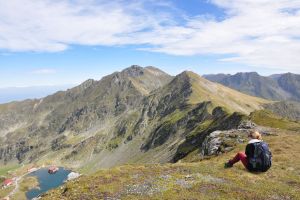
2 or 3 Day Hiking Trip in Fagaras Mts: Negoiu or Moldoveanu Peak
Start from: Brasov (pick-up)
The next popular trail is to summit Negoiu, the second-highest peak in Romania at 2,535m - which some say is more spectacular than Moldoveanu. Can be done on a 2-day hike from Brasov/Sibiu with overnight at Negoiu Cabin or Balea Lake Cabin.
Other popular one-day hikes go to Lacul Capra or Vanatoarea lui Buteanu peak.
There are also some easy-medium trails (4-5h) around Balea Lake for those looking for an easy walk while enjoying the beautiful views - as long as you have hiking boots!
- Local tip: Don’t underestimate the Fagaras Mountains. Trails along steep crests with ravines and rock formations can be dangerous, with cables in some sections to prevent fatal falls. With few signs of life, proper preparation, supplies, and equipment are crucial if hiking alone. Weather can change rapidly at high altitudes, so hiring a guide is highly recommended!

Yup, you can stay in that cabin and see a bear out the window!
2. Bucegi Mountains
The Bucegi Natural Park, part of the Southern Carpathian Mountains, is home to some of the most stunning landscapes in Romania, with towering peaks, deep valleys, and crystal-clear mountain streams.
Visitors can hike along scenic trails that offer breathtaking views of the surrounding wilderness or explore the numerous caves and rock formations that dot the area.
Thousands of tourists (mostly city folk) come here each year because they're very accessible using a cable car that will take you up to Bucegi plateau:
- in Sinaia, two cable cars will take you from 1,000m to 2,200m (20 Euro up + down in total)
- in Busteni, the cable car will take you up to Babele (35 Euro up + down)
So the uphill hike is avoided - unless you're ready for the challenge? :)
Popular mountain trails in the Bucegi Mountains
Bucegi Mountains are very popular for their natural attractions the Sphinx and Babele*, two rocks sculpted by natural forces that can be seen on the plateau, as well as *Caraiman Cross, a WWI memorial that offers panoramic views of Prahova Valley and the rest of the Carpathian Mountains.
Omu Peak at 2,505m can be reached on a 4-5h (one way) medium hike from the plateau.
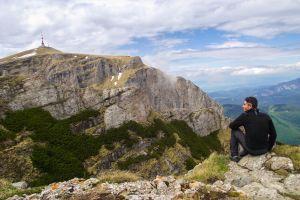
1 or 2 Day Hiking Trip in Bucegi Mountains: Sphinx, Babele, Omu Peak
Start from: Bucharest OR Brasov
Hikers looking for the non-tourist trails will go through Valea Cerbului, a narrow rocky valley like a canyon that looks frightening whichever way you look at it! Or to Bolboci Lake or Varful Grecului. Or descend on the other side of Bucegi into Moeciu/Fundata area through Strunga Saddle (7h medium hike, 900m downhill).
- Local tip: Be sure to visit major attractions in the area such as Peles Castle or Cantacuzino Castle.
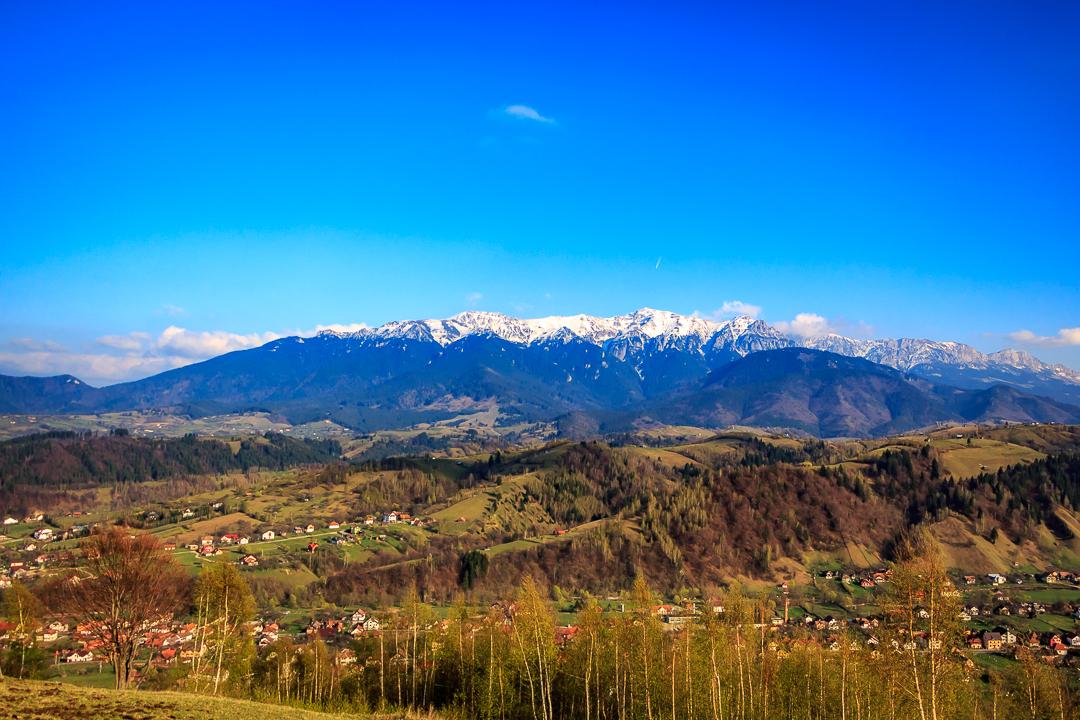
3. Piatra Craiului Mountains
Probably the most jaw-dropping and scenic mountains in Romania, you'll recognise Piatra Craiului from anywhere with their unmistakable white limestone ridge that scratches the horizon and many rocky formations. Whenever I see them I can't take my eyes away and hear a soft voice saying come hike me!
Piatra Craiului National Park has the largest number of trails and options for day hikes of varying difficulty levels in Romania. Most of them are accessible all year round even if there's snow (with proper clothing), which makes it one of the best places for hiking in Romania.
The park is also known for its many species of plants (30% of Romania's total!) and wildlife which you may be lucky to see on your trip - so outdoor enthusiasts will be very happy here.
Popular mountain trails in Piatra Craiului National Park
The most popular hiking route here is spectacular: crossing the main ridge (approx. 20km, 8h, high difficulty, for experienced hikers only). For this, you need a 2 or 3-day trip and stay overnight in the mountains (in the villages at the base or at Curmatura Hut).
While crossing the ridge you'll also reach the highest peak here, La Om or Piscul Baciului, with a maximum altitude of 2,238m.
- Pro tip: All trails in the upper parts of Piatra Craiului go up on rocky trails with steep ravines on both sides and difficult passages where a good hiking experience is required; but the panoramic views are breathtaking and this will be a great experience you'll remember!
Most hiking routes start from Fântâna lui Botorog at the entrance of Zarnesti Gorges (a 'must see' natural attraction) going up to Curmătura Cabin. From there there are lots of options to go on. For example, to Piatra Mica peak (8h, medium/high difficulty), Poiana Zanoaga (7h) or to Saua Vladusca and Saua Joaca.
At lower altitudes, people who want a beautiful day in nature can go on a walking trip in traditional villages of Magura, Pestera, Sirnea, Ciocanu, Satic.
You will likely cross paths with many shepherds while hiking these mountains including some overly-protective dogs! When in the mountain villages of Romania, it's polite to nod your head or say hello :)
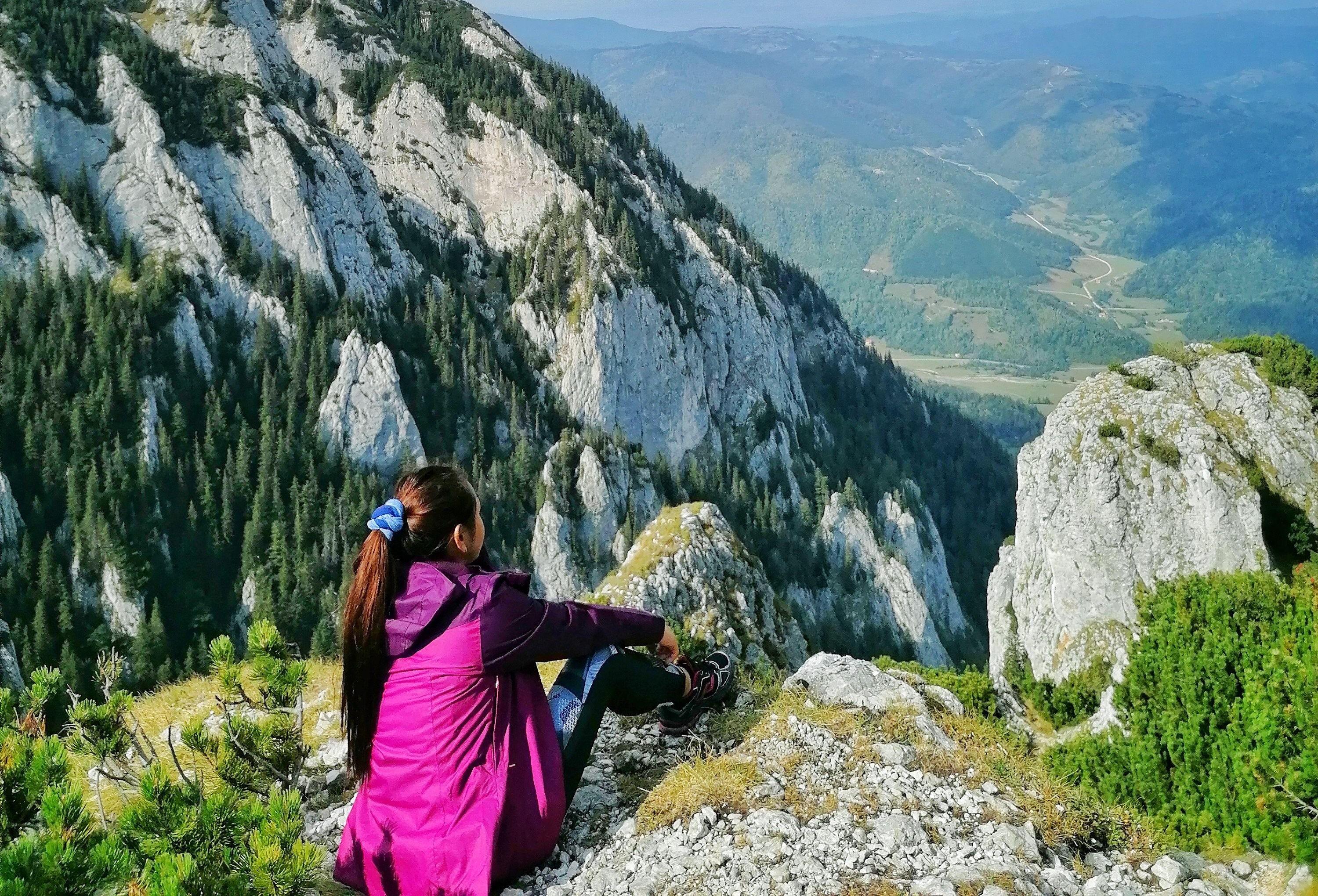
A short trail in Piatra Craiului will quickly be rewarding
4. Apuseni Mountains and National Park
The Western Carpathian groups are the smallest of the three and are locally known as the Apuseni Mountains. They're the most popular hiking destination in Transylvania, close to Cluj-Napoca, Oradea and Sibiu.
While they don't stand out with remarkable heights (the highest peak is Bihor at 1,849m), there are many natural attractions and things to do here - besides hiking with beautiful views of traditional mountain villages - that make up for it:
- over 200 caves open for visitors (some caves allow for deep caving and speleological exploration)
- karst rock formations with narrow canyons ideal for mountaineering, rappelling and via ferrata (Turda Gorges, Suncuius)
- some areas are popular among local photographers and amateur astronomers for dark sky observation
Apuseni Natural Park also contains the ethnographic region known as Motilor Land (Tara Motilor). The villages here preserve a traditional way of life, so while hiking in the area to visit natural sights you'll meet locals, enjoy meals with them and learn about a unique part of Romanian culture.
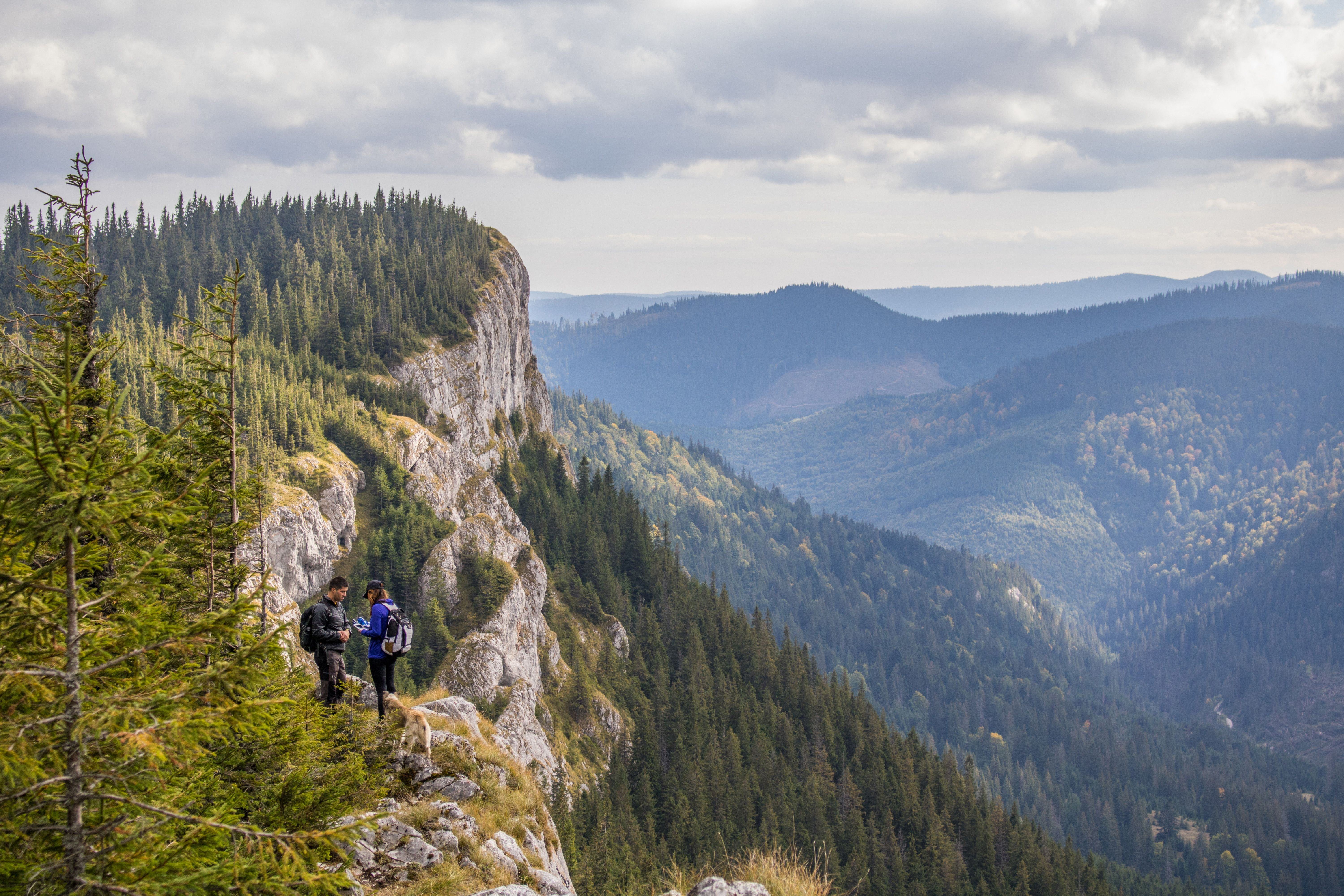
Popular mountain trails in the Apuseni Mountains
Hiking trails in Apuseni are generally of medium difficulty (4-6h, 8-14km) starting from the villages of Marisel, Rachitele and Padis. Obviously, there are also some harder ones going into wild areas and if you want to summit the highest peak then you should consider staying at a guesthouse in the mountains.
The most spectacular hike in the Apuseni Mountains is The Lost World (Cetățile Ponorului și Lumea Pierdută), famous for its striking limestone formations, including gorges, caves, and impressive peaks.
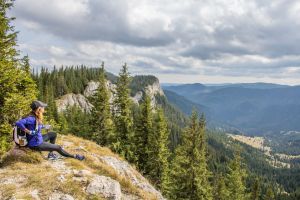
1 or 2-day Hiking Tour from Cluj: Wild Trails in Apuseni Natural Park
Start from: Cluj-Napoca
The most popular natural attractions in Apuseni Natural Park are: Scarisoara Glacier and Ice Cave, the Rusty Ravine, Scarita Belioara Reserve, Bears' Cave and Bride's Veil Waterfall. And Turda Gorges, an enclosed miracle oasis of nature very popular for one day hikes and via ferrata adventures.
5. Retezat Natural Park
The hidden jewel of the Carpathians, Retezat National Park in the Southern Carpathians group (near Timisoara) was a couple of votes away from being included in the list of New 7 Wonders of Nature.
Retezat are among the least friendliest of Romania's mountains. Besides the complex logistics of getting to Carnic - the entry point into these mountains - there are very few-to-none accommodation options in the area, not even cabins or refuges!
This means the only way to see them is by doing a camping expedition so hikers should have an above average physical condition. But imagine having nature as your hotel and knowing that the following day you'll be lucky to choose a new place to stay wherever you want!
Popular mountain trails in the Retezat Mountains
This pristine, uninhabited piece of land offers wild scenes with many glacier lakes and spectacular views like no other.
Most hikers choose between the lakes trail to visit the famous Bucura Lake (the largest glacial lake in the country). Or to summit Peleaga Peak the highest in the area at 2.509m which will reward the brave with a great adventure and spectacular views.
***
I hope I convinced you why hiking in Romania is a fantastic idea for your next trip in 2025 :)
See you on the trails!
Your Romanian Friend,
Marius
